The Internet of Things (IoT) is far from a new topic in the manufacturing, industrial and defense logistics sectors. Although the IoT is moving beyond a buzzword to real-world utilization, not all stakeholders fully understand this transformative technology. So exactly what is the Internet of Things and why should you care? Here’s what you need to know to successfully lay the foundation for the IoT and ensure long-term success.
Making Sense of the Internet of Things
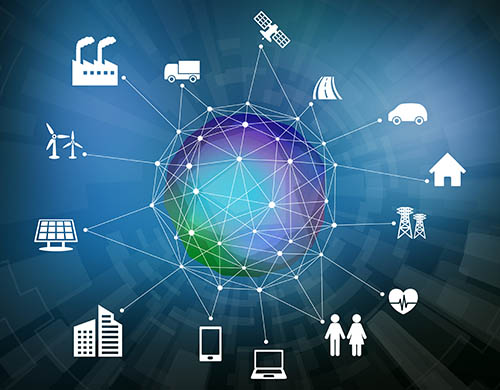 Wikipedia describes the Internet of Things as a “network of physical devices, vehicles, home appliances and other items embedded with electronics, software, sensors, actuators, and connectivity which enables these objects to connect and exchange data.”
Wikipedia describes the Internet of Things as a “network of physical devices, vehicles, home appliances and other items embedded with electronics, software, sensors, actuators, and connectivity which enables these objects to connect and exchange data.”
In the private sector, the Internet of Things connects smartphones, smart appliances, smart home thermostats, wearables and much more. The rapid expansion of devices connected to the internet is intended to make our life better, including saving us time and money.
The application of the IoT in the manufacturing industry leverages intelligent, connected devices to greatly improve operational efficiency, productivity and profitability. The digital transformation within manufacturing and supply chains is dubbed the Industrial Internet of Things (IIoT), Industry 4.0. and the Industrial Internet.
Connecting People, Data & Processes to Improve Efficiency
The Industrial Internet allows organizations to connect their people, data and processes so business leaders have a complete, accurate picture of their enterprises. Companies are achieving substantial costs savings with the IIoT due to automation, predictive maintenance, and real-time production and supply chain data.
The Internet of Things relies on application programming interfaces (APIs), which tie together the connected “things.” The APIs essentially serve as the messengers between applications and connected objects. The IoT also relies on the cloud to provide the integration and computing power to fulfill the promise of a connected world.
One of the most significant benefits of the Industrial Internet is the ability to rapidly collect large volumes of data, or Big Data, that can be analyzed for insights that drive smarter, faster and better decisions.
A Growing yet Fragmented IoT Marketplace
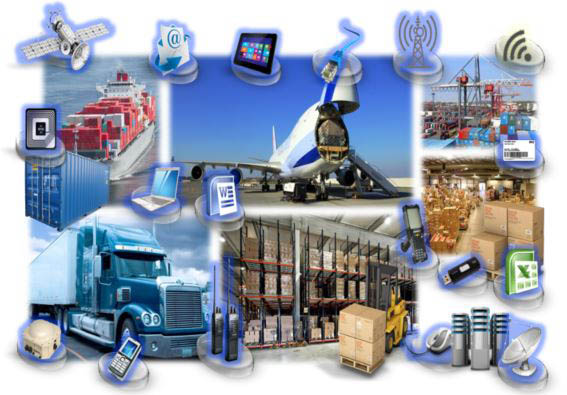
IoT providers are flooding the market, which has led to a proliferation of disparate sensors and devices that track and manage assets.
By 2020, analysts estimate that the number of connected devices worldwide will range from 20 billion to 47 billion, and global spending will range from $267 billion to $1.2 trillion, according to data compiled by WeSpeakIoT. Although the IoT figures vary drastically, there is no doubt that the Internet of Things will have a huge impact on our lives and economy.
However, there is enormous fragmentation in the larger IoT industry. Providers of IoT software and hardware solutions are entering the market en masse, which has led to a proliferation of sensors and devices that speak different languages.
As a result, organizations are facing major challenges with interoperability between devices and machines that use different protocols and architecture. They’re often dealing with multiple vendors with multiple, disparate IoT hardware and sensor solutions. So how do you bring it all together?
Establishing a common IoT platform for the data stream will allow multiple sensor technologies to communicate seamlessly; this is what Tapestry’s Enterprise Sensor Integration (ESI) is all about.
Why is Enterprise Sensor Integration so Appealing?
It all boils down to situational awareness: Manufacturing and supply chain operations want complete visibility of their enterprises, not spreadsheet reports. They need to know the immediate status, including the location of their important assets. They need a common platform to host their hardware and software tracking technologies – a solution that can integrate with newer IoT applications as well as legacy ERP solutions.
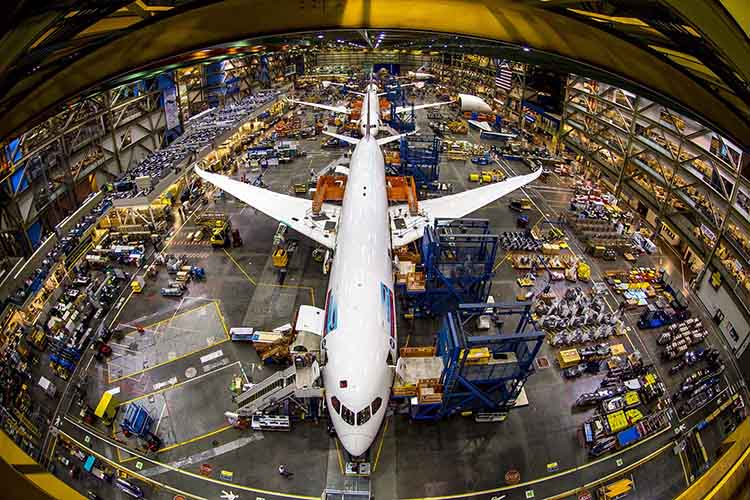
ESI connects people, data and processes at 50 Boeing assembly plants, including its Everett, WA factory, pictured here.
Large and small enterprises also need a cloud-capable solution that can process enormous amounts of data. Above all, they require a sensor-agnostic solution that will ensure interoperability.
ESI software meets all these requirements. In fact, ESI is the first system of its kind that has been successfully implemented at enterprise-level scale. The first customer was Boeing – the world’s leading aerospace company. Tapestry implemented ESI across 50 Boeing plants, including the Everett factory, the largest manufacturing facility in the world. In the process, ESI has saved Boeing $100 million in the first year alone.
So How does ESI Work?
Through data fusion, ESI connects multiple sensors, devices and systems into a single integration platform. Because it is “sensor agnostic,” supply chain visibility is not completely dependent on one manufacturer or sensor type. This ensures total asset visibility of equipment, tools, cargo and processes anywhere in the world.
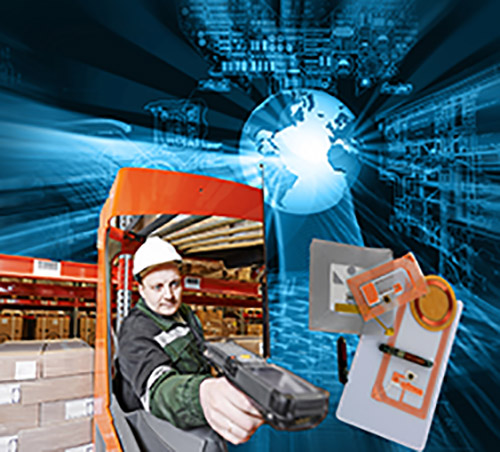
ESI integrates sensors ranging from RFID tags, GPS-enabled WiFi tags to complex servers.
ESI connects sensors ranging from RFID position-information tags, passive and active GPS-enabled WiFi tags to embedded hardware and complex servers. It also seamlessly integrates customers’ legacy and next generation systems. It works in the cloud or on dedicated servers to meet the needs of large enterprises.
Among its applications, ESI provides sensor device and infrastructure management; real-time automated alerts; mapping applications; and integration with temperature sensors, thermostats, pressure sensors and humidity sensors.
Additionally, ESI generates automatic notifications when parts or assembly kits arrive; monitors equipment for improper handling; and ensures compliance with all storage and inventory management requirements.
Let Tapestry Help Your Organization Tap the Power of the IoT
The possibilities of connecting billions of people and “things” through the cloud and networks – with unprecedented processing power, storage capacity and access to knowledge – are virtually limitless. These possibilities are multiplied by emerging technologies in fields such as artificial intelligence, robotics, autonomous vehicles, 3-D printing, nanotechnology and quantum computing.
However, enterprises must first lay a solid foundation to ensure successful entry into this rapidly evolving landscape. The key benefits are total asset visibility, improved productivity and, above all, significant savings for your organization.
Learn how to tap the power of the IoT today and improve your bottom line by requesting a Tapestry ESI Demo or emailing marketing@tapestrysolutions.com.
Contact:
Janet Dayton
Tapestry Solutions Inc.
Boeing Global Services
jdayton@tapestrysolutions.com
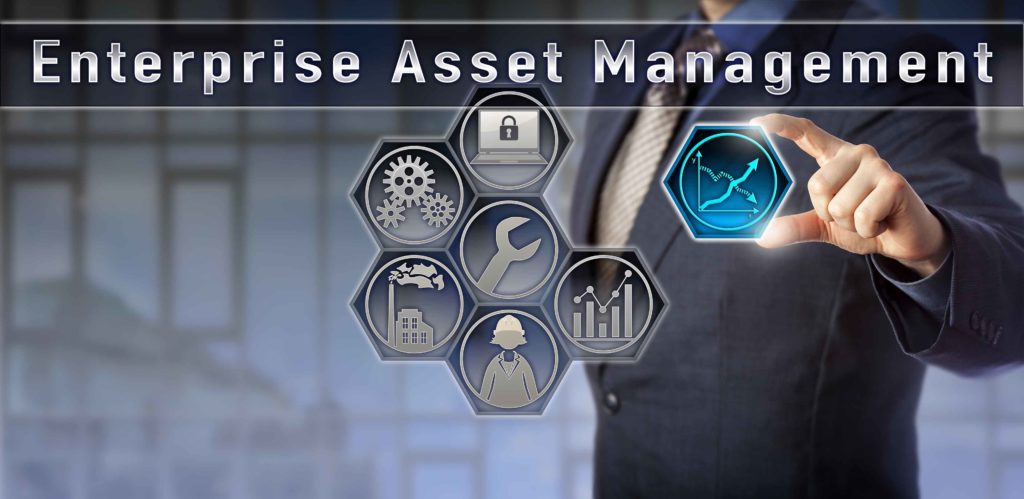
 provide detailed, as well as broad, asset risks and opportunities. This promotes faster decision making and more effective risk management.
provide detailed, as well as broad, asset risks and opportunities. This promotes faster decision making and more effective risk management.